Like Venice, Bruges (Brugge) is filled with small, winding, cobblestone streets, bridges and canals. It is a small town (with a Medieval atmosphere and good waffles) with a population of about 120,000.

The town is believed to have been founded by Vikings in the 9th century. Its name may be related to brygga, a Scandinavian word meaning a mooring place. Bruges prospered as an international port. Two outposts were created at Sluis and Damme when the Zwin began to silt up and the ships could no longer sail to the town. Traders from near and far came to Bruges to buy Flemish cloth, a high-quality woollen material produced in other Flemish cities. The enjoyed its peak as a trading and financial centre in the 13th-14th century, but went into decline in the 15th century with a crisis in the textile industry and the competition of other harbours. By the late 16th century, however, Bruges was the poorest town in Belgium. It was only revived by tourism in the 20th century.
Here's a pic from the main square ...
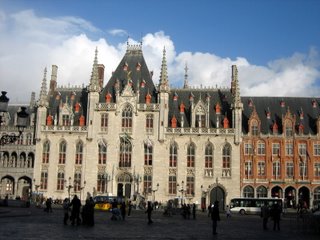
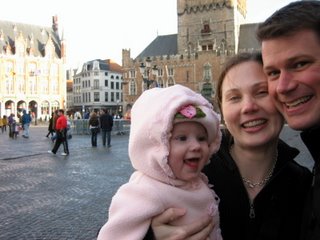
The Chapel of the Holy Blood (below) contains a relic of great significance to Christians: a flask oft rock crystal believed to contain Christ's blood.
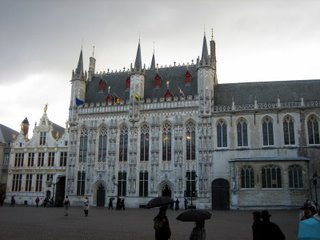
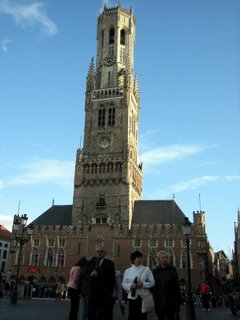
And the place that sells he best art in Bruges. We were so impressed we bought three pieces.
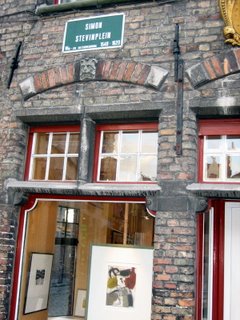
If you decide to go to Bruges, we recommend staying at the Hotel Princenhof - it's a gem of a hotel and very reasonably priced. http://www.prinsenhof.com/
Special thanks to http://belgium.europe-cities.com/bruges/bruges.aspx for providing the historical information about Bruges.
No comments:
Post a Comment